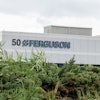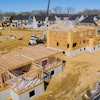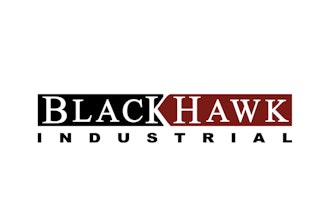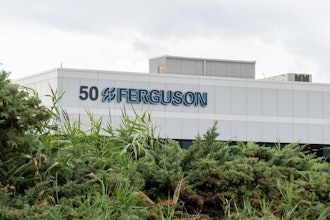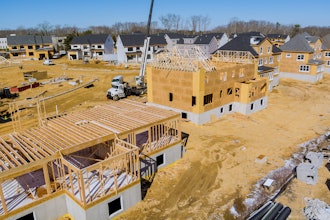SEATTLE (AP) — The dilapidated factory that helped make Seattle a high-tech town is being demolished after 75 years, a casualty of time, technology and tails that grew too tall.
Boeing Co.'s Plant 2, a sprawling but long outdated building between Boeing Field and south Seattle's Duwamish River, gave birth to some of the world's most significant aircraft. It was the site of Seattle's biggest disappearing act and a home to "Rosie the Riveter," women who built thousands of World War II planes.
It's also where the mostly unskilled workers of a fish-and-timber town first learned the art of assembling aluminum, engines and electronics into sophisticated flying machines.
As the danger of global conflict grew, Boeing opened the factory in 1936 to build the prototype for the B-17 Flying Fortress. Eventually, nearly 13,000 of the bombers would be built, half of them at Plant 2.
Later in the war, it was where Boeing developed the B-29, a revolutionary plane with advanced radios, radars and computer-aided machine guns, that dropped the atom bombs on Hiroshima and Nagasaki.
"These were incredibly advanced pieces of engineering and they were being made by people who would spend those war years learning how to be essentially the high-tech workers of their day," says Leonard Garfield, executive director of Seattle's Museum of History and Industry. "So when we think about Seattle as a hotbed of high-tech innovation, it's not just from the recent years, it really can be traced very much to what happened in Plant 2."
Under an agreement with the state and federal governments and Indian tribes, Boeing will tear down the nearly empty factory to restore more than a half-mile of the Duwamish and create nearly 5 acres of wetlands. Demolition should begin this fall, Boeing spokeswoman Kathleen Spicer said.
Plant 2 is about a mile up upriver from Boeing's original Plant 1, a site sold decades ago.
The difference between the two was striking, Boeing corporate historian Mike Lombardi says. Plant 1 was a workshop where biplanes were stitched, glued and nailed together. Plant 2 was a modern assembly line, where metal parts fabricated in the back were transformed into aircraft as they inched toward the front doors.
Thousands of people — at one point nearly half of them women — worked at the plant during World War II, breaking barriers and requiring Boeing to adopt new ways of treating employees.
Eva Vassar was a wartime shipyard welder before being hired at Plant 2 in 1951 as a riveter and mechanic.
"Sometimes I would be the only woman in that area," she said, "but they enjoyed working with me because I carried my weight. I'm not just bragging, but I did the job just as well."
Joe Sutter got a summer job at Plant 2 in 1940 while studying aeronautical engineering at the University of Washington. After the war, he came back to Boeing, where he's known as the "father of the 747" for being the jumbo jet's chief engineer.
During World War II, "It was hectic because they needed many workers and they had three shifts going," Sutter recalled. "I worked the graveyard shift and you met all kinds of people — some people that were hard workers and others would find a boxcar to sleep in. It was pretty wild."
Plant 2 was so critical that Boeing camouflaged its roof with faux streets and houses of fabric and plywood, making it nearly vanish into nearby neighborhoods.
Beneath the plant, tunnels led to cafeterias, restrooms and classrooms, innovations to make life easier for workers and keep them close to their jobs.
In the late '40s, Plant 2 was where Boeing developed the B-47, the first large swept-wing jet, and the B-52 bomber, still in service with the Air Force after six decades. In the 1960s it turned out the initial 737, now Boeing's best-selling jetliner.
But the plant was headed toward obsolescence within 15 years after it opened. Though it had expanded from its original 60,000 square feet to more than 1.7 million, it was too small for modern aircraft. And the roof beams were just 35 feet high.
That was a problem — the tail of the prototype B-52 was 48 feet tall. Boeing's temporary fix was to put hinges on the early B-52s' vertical fins, Lombardi said.
Plant 2 was used as a machine shop into the 1980s, but emptied as that work shifted to bigger, more modern facilities. The plant is now overshadowed by Boeing's nearby complexes for military work, research, offices, flight testing and aircraft deliveries.
Parts of old factory are too dangerous to enter. Mark Calkins, head of facilities for the site, says Boeing has been reluctant to sink more money into the building, which leaks, has been damaged by earthquakes and where broken water mains sometimes flood the tunnels.
The huge production bays now store tools, vehicles and surplus office equipment, plus scattered piles of old computers and other castoffs. Boeing also provides temporary space for Museum of Flight volunteers restoring a B-17, a B-29 and a Lockheed Super Constellation airliner.
"I know it's got structural difficulties and it's probably a headache to maintain," Sutter says, but he'd like at least part of Plant 2 preserved to display such historic planes.
"It's just sad to see it go."


